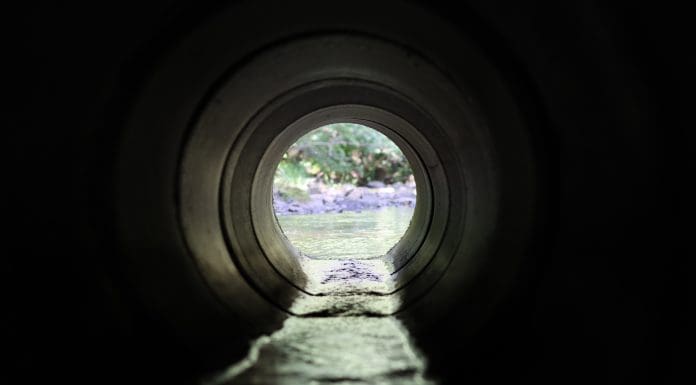
RSK Geosciences principal engineer Kevin Holmes argues that, while housebuilders and developers have long been aware of the importance of suitable surface water drainage strategies on completed developments, responsible developers should have the same level of awareness of regulations governing water discharge during the construction phase and suggests how developers can remain compliant
Water on a construction site will nearly always be an issue owing to rainfall, and given that UK soils commonly contain silts or clays, most construction projects will generate silt-laden wastewater.
Watercourse drainage consent acquired via local authorities is often misconstrued as consent to discharge water during the temporary construction phase of works. Temporary discharge of water off-site that is released into the environment will be classed by the environmental regulator as a water discharge activity and subject to environmental permitting regulations. Construction sites that do not hold a valid permit are vulnerable to regulatory and enforcement action, which can include significant fines and work delays, not to mention loss of reputation.
There are situations when the environmental regulator may not look to enforce the need for an environmental permit for some activities, such as the temporary storage, reuse, treatment and discharge of water from excavations, so long as the requirements set out within the regulatory position statements (RPS) are complied with.
Generic water management plans are not suitable for construction sites
Unfortunately, the RPS are both overly relied on and of limited use to service temporary discharges from construction projects, where a bespoke permit should be put in place for activities that do not meet the conditions for the RPS. In practice, this means that all construction sites require appropriate bespoke environmental permits and a suitable construction surface water management plan to cater for this discharge.
In order to obtain a bespoke permit, an application must be made to the regulator and a fee should be paid prior to submission. The information required typically includes a non-technical summary of the discharge activities involved, providing a simplified explanation of the proposed discharge activities and commentary on the effluent quality and intended treatment, as well as the management systems and maintenance programme that will be in place to safeguard the environment. It should be easy to read and summarise neatly what the developer intends to do. The regulator may also require additional assessments, such as a habitat assessment or a specific substances assessment, which can be confirmed as part of the regulator’s pre-application advice service.
The forms used for these permit applications actually cover a range of activities and are not solely for discharge from construction sites. There are sections on sewage treatment, mining processes and waste operations that don’t apply to most of the activities a developer and contractor would plan to undertake. This can make the forms quite confusing for someone not experienced in their submission.
It can take up to a year to secure a bespoke permit
Upon receiving the application, the regulator will undertake a screening assessment to ensure all mandatory information has been received, and once this is completed the application will be classed as ‘duly made’ and passed to a permitting officer for determination. It is important to note that it can take over 6 months, and in some cases up to 12 months, for a permit to be prepared, submitted and determined, a time frame that developers need to be aware of and factor into their development programme to avoid potentially costly delays.
Once issued, the permit comes with conditions relating to water quality, and it is the duty of the permit holder to ensure that all conditions are adhered to. The required monitoring, for example, water quality spot-checks or laboratory testing of collected water samples, will be specified in the permit. Generally, this will follow the proposed construction surface water management plan that has been submitted but may include additional specifications if the regulator feels they are necessary.
Should discharged water breach limits set in the permit, it remains the responsibility of the permit holder to adapt their surface water management plan accordingly, so it is in everyone’s interests to ensure that the management plan is suitable from the outset, as a pollution event can result in an unlimited fine or prosecution and even a custodial sentence.
Water discharge regulations may be updated in the coming months
Developers must be aware of their duties and responsibilities towards water discharge on a construction site. The UK and Welsh governments have recently launched a joint consultation to reform environmental permitting regulations, which will hopefully result in a more streamlined and responsive permitting process.
Until then, while simply having a construction surface water management plan does not exempt a developer from the need to properly monitor and mitigate the discharge of potentially contaminated water, it is an important – and, in our experience, a poorly understood – first step in ensuring regulatory compliance.
The post Making water discharge an early priority crucial for well-regulated, compliant sites appeared first on Planning, Building & Construction Today.

